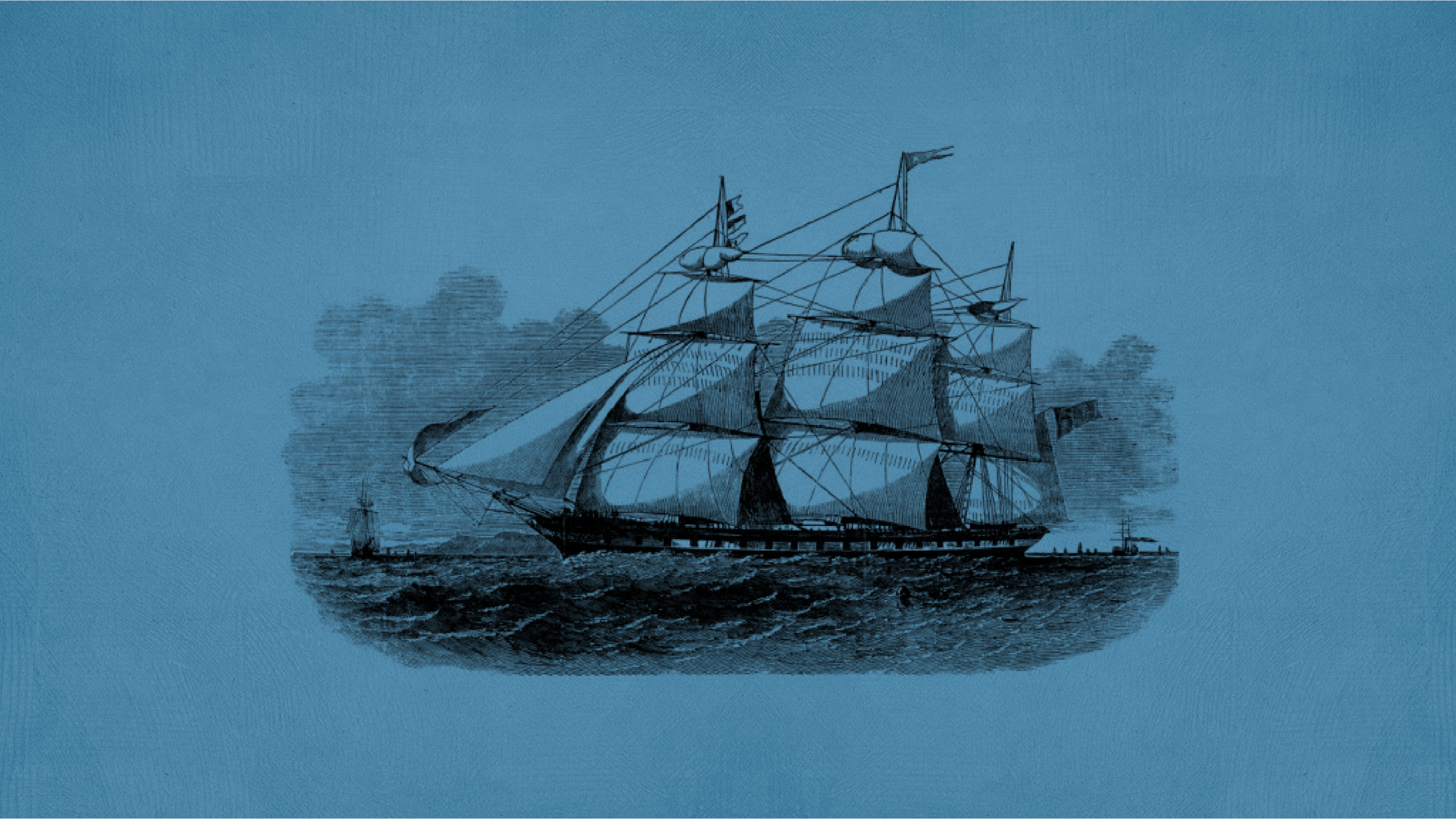Shipwrecks
Lambay Island has claimed quite a number of shipwrecks, the most notable of which was RMS Tayleur.
She was a ship hailed as the biggest, fastest and safest vessel of her kind, the pride of the White Star Line, set out on her maiden voyage to the chorus of cheering crowds and hopeful passengers dreaming of a better life. But this was to be a doomed voyage and within two days of setting sail for the other side of the world the RMS Tayleur would be wrecked in the waters around Lambay Island. One of the largest merchant ships of her day, she struck the island on 21st January 1854 just hours into her maiden voyage from Liverpool to Perth, Australia and sank with the loss of 380 lives. The Tayleur disaster has often been compared to the Titanic, some people on board managed to scramble ashore, but fatique and the cold claimed the rest. The iron hull of the ship is still lying there in about 18 metres of water, just off the south-east of the island.
If you’d like to read more about the RMS Tayleur check out Gill Hoff’s excellent book on the subject. You can purchase the book here on Amazon. Also why not read our interview with Gill Hoffs when we talk all things Tayleur.
SS Polwell
Another wreck the researchers have gathered data on is the SS Polwell, a 2,000-ton ship which was sunk by a German submarine during World War I is lying on the seabed just 8 km north-east of Lambay Island off the Fingal coast. Built in North East england in 1888, she was torpedoed in 1918 northeast of Lambay Island. According to Warships, U-Boats and Liners, a guide to shipwrecks mapped in Irish waters, the British steamer was on a trip from Troon, Scotland, to France with a cargo of coal on June 5th, 1918. When a warning shot was fired across its bows by a German submarine as it approached the Irish coast, the crew of 30 abandoned ship and took to two lifeboats.The submarine fired a single shot at the Polwell – hitting it amidships and sinking it. All of the crew landed safely at Rockabill lighthouse off Skerries an hour later.
Among the other shipwrecks off the Co. Dublin coast which are covered in the new book is that of the 444-ton steamer Fern which lies 20 miles east of Ireland’s Eye. On April 12, 1918, the Fern was on a trip frrom Dublin to Heysham, Lancashire, with general cargo when it was torpedoed and sunk without warning by U-104. All 13 crew on board were killed in the attack. The Fern was one of eight ships sunk by U-104 during the war. Three days after the loss of the Fern, U-104 was sunk by a British warship south of Co Wexford, with the loss of all but one its crew of 42. The book states that the wreck of the Fern lies in a general depth of 79 metres at the south-eastern end of the Lambay Deep, which is one of the deepest parts of the Irish Sea, reaching depths of more than 130 metres.
RMS Leinster
Another wreck surveyed by the research team was that of the RMS Leinster, which sank in 1918 after being torpedoed off Howth Head.In 1895, the City of Dublin Steam Packet Company ordered four steamers for Royal Mail service, named for four provinces of Ireland: RMS Leinster, RMS Connaught, RMS Munster, and RMS Ulster.The Leinster was a 3,069-ton packet steamship with a service speed of 23 knots (43 km/h). The vessel, which was built at Laird’s in Birkenhead, England, was driven by two independent four-cylinder triple-expansion steam engines.During the First World War, the twin-propellered ship was armed with one 12 pounder and two signal guns.
More than 500 people died in what was the single greatest loss of life in the Irish Sea. According to a website dedicated to those who perished on the ship, it was shortly before 10 am, about 16 miles from Dun Laoghaire, when people on the deck of the Leinster saw a torpedo approaching the port side of the ship. It missed, passing in front. Soon afterwards another torpedo struck the port side where the postal sorting room was located. Postal sorter John Higgins said the torpedo exploded, blowing a hole in the port side. The explosion travelled across the ship, also blowing a hole in the starboard side. In an attempt to return to port, the Leinster turned 180 degrees and faced the direction from which it had come.
With speed reduced and slowly sinking, the ship sustained few casualties and lifeboats were being launched. At this point a torpedo struck the ship on the starboard side, causing catastrophic damage. The Leinster sank soon afterwards, bow first. Many of those on board were killed in the sinking, while many more died awaiting rescue. In 1991, the anchor of the RMS Leinster was raised by local divers. It was placed near Carlisle Pier and officially dedicated on 28 January, 1996. In 2008, 90 years after its sinking, a commemorative stamp was issued by An Post, recalling particularly the Post Office’s 21 staff who died in the tragedy. The sinking of the vessel is further recalled in the postal museum of the General Post Office, in Dublin’s O’Connell Street.

